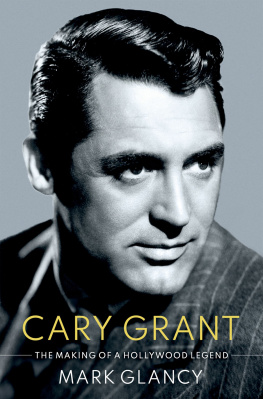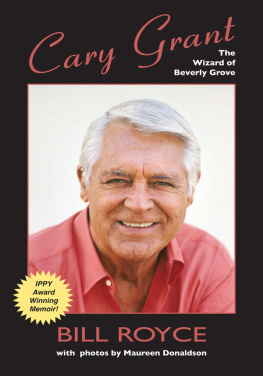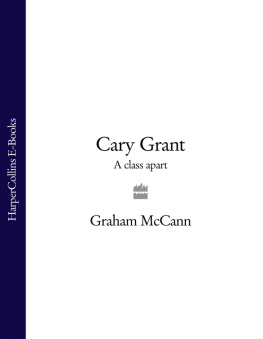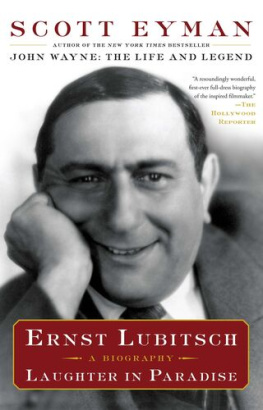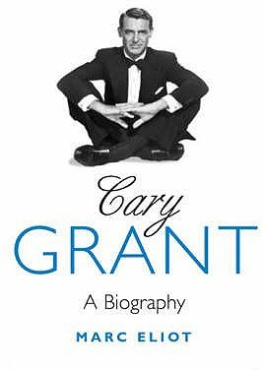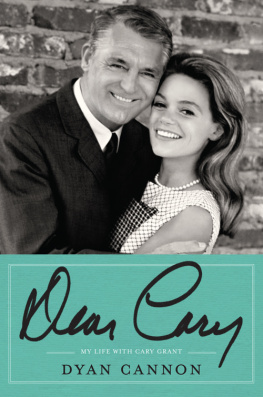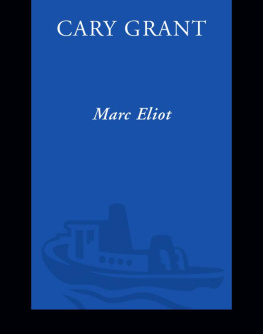Cary Grant, the Making of a Hollywood Legend
OXFORD CULTURAL BIOGRAPHIES
Gary Giddins, Series Editor
A Generous Vision: The Creative Life of Elaine de Kooning
Cathy Curtis
Straighten Up and Fly Right: The Life and Music of Nat King Cole
Will Friedwald
Music by Max Steiner: The Epic Life of Hollywoods Most Influential Composer
Steven C. Smith
Cary Grant, the Making of a Hollywood Legend
Mark Glancy

Oxford University Press is a department of the University of Oxford. It furthers the Universitys objective of excellence in research, scholarship, and education by publishing worldwide. Oxford is a registered trade mark of Oxford University Press in the UK and certain other countries.
Published in the United States of America by Oxford University Press
198 Madison Avenue, New York, NY 10016, United States of America.
Mark Glancy 2020
All rights reserved. No part of this publication may be reproduced, stored in a retrieval system, or transmitted, in any form or by any means, without the prior permission in writing of Oxford University Press, or as expressly permitted by law, by license, or under terms agreed with the appropriate reproduction rights organization. Inquiries concerning reproduction outside the scope of the above should be sent to the Rights Department, Oxford University Press, at the address above.
You must not circulate this work in any other form and you must impose this same condition on any acquirer.
Library of Congress Control Number: 2020943043
ISBN 9780190053130
eISBN 9780190053154
For
Roger Law
Contents
Source: The Cary Grant Papers, courtesy of the Margaret Herrick Library
Source: authors own collection
Source: The Cary Grant Papers, courtesy of the Margaret Herrick Library
Source: The Cary Grant Papers, courtesy of the Margaret Herrick Library
Source: The Cary Grant Papers, courtesy of the Margaret Herrick Library
Source: authors own collection
Source: The Cary Grant Papers, courtesy of the Margaret Herrick Library
Source: The Cary Grant Papers, courtesy of the Margaret Herrick Library
Source: The Cary Grant Papers, courtesy of the Margaret Herrick Library
Source: The Cary Grant Papers, courtesy of the Margaret Herrick Library
Source: The Cary Grant Papers, courtesy of the Margaret Herrick Library
Source: The Cary Grant Papers, courtesy of the Margaret Herrick Library
Source: authors screen capture
Source: The Cary Grant Papers, courtesy of the Margaret Herrick Library
Source: authors screen capture
Source: authors screen capture
Source: authors screen capture
Source: authors screen capture
Source: authors screen capture
Source: The Cary Grant Papers, courtesy of the Margaret Herrick Library
Source: authors screen capture
Source: authors own collection
Source: authors screen capture
Source: authors screen capture
Source: authors screen capture
Source: The Cary Grant Papers, courtesy of the Margaret Herrick Library
Source: The Cary Grant Papers, courtesy of the Margaret Herrick Library
Source: authors screen capture
Source: authors screen capture
Source: authors screen capture
Source: authors screen capture
Source: The Cary Grant Papers, courtesy of the Margaret Herrick Library
Source: authors screen capture
Source: The Cary Grant Papers, courtesy of the Margaret Herrick Library
Source: authors screen capture
Source: authors screen capture
Source: The Cary Grant Papers, courtesy of the Margaret Herrick Library
Source: authors screen capture
Source: authors screen capture
Source: authors screen capture
Source: The Cary Grant Papers, courtesy of the Margaret Herrick Library
Source: authors screen capture
Source: authors screen capture
Source: authors screen capture
Source: authors screen capture
Source: authors screen capture
Source: The Cary Grant Papers, courtesy of the Margaret Herrick Library
Source: authors screen capture
Source: authors screen capture
Source: The Cary Grant Papers, courtesy of the Margaret Herrick Library
Since Plutarch, cultural biography has too often lent itself to the extremes of hagiography and demonization: biography not as fact-based narrative with a critical point of view, but as testimony of slavish devotion or blunt disdain. A particularly toxic mode of disdain, fueled by gossip and amplified by outrage, focuses on artists once regarded with veneration and later found to be imperfect. Cary Grant was among those who got it in the neck. Some of the early accounts of his life were so intent on portraying a bitterly disturbed and miserly closet-case that readers unfamiliar with his uniquely creative luminosity on screen (if any such readers exist) might wonder why he merited a full-dress biography at all. Mark Glancy puts artist and art in perspective, and finds much to admire in both.
Grant was born for the screen. One suspects he would have been amusing but diminished on stage. Of course, he came from the stage, but, significantly, not the stage of Shakespeare and Shaw. Rather, like Keaton and Chaplin, he served his apprenticeship in varietythe theater of pratfalls, sketches, blackouts, beer drinking songs, and stilt-walking, the last his specialty when he toured under his birth name, Archie Leach. He remade himself onscreen, mastering the tools of the more intimate medium, including the close-up; the mutable mise en scne on which to impose his graceful angularity; and the microphone, which caught the nuances of his much-imitated but finally inimitable voice. Nobody talks like that! the Jack Lemmon character challenges the Tony Curtis character, who does a spot-on Grant impression in Some Like It Hot, invariably getting a raucous laugh because no one did speak like that during Prohibition, when that film takes place, or after, except for Cary Grant.
In Cary Grant, the Making of a Hollywood Legend, Glancy examines his accent as a fusion of Bristol, where he was born, and Brixton, where he worked, with his methodical attempt to sound American, resulting in an agile mid-Atlantic concoction entirely sui generis. Glancy, a British film historian who has focused on the cinematic connections between two countries separated by a common language, gives us a thorough and knowing account of his life and career, not least the difficult years of his childhood. (Even Freud might have blanched at the Oedipal snags arising from his father telling young Archie that his mother was dead when, in fact, he committed her to a mental asylum three miles away so that he could live with another woman.) One primary research source was the thirty-nine linear feet of boxes, filled with papers that Grant had amassed and preserved for posteritys sake. They were available to previous biographers who evidently perused them superficially or not at all.

